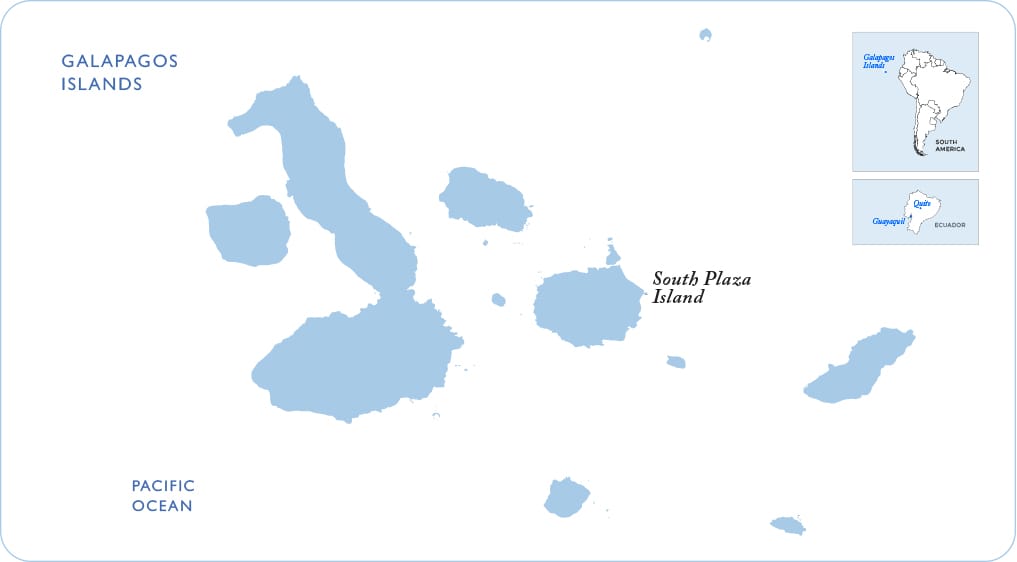- Home >
- Travel Guide >
- Galapagos Islands >
- About Galapagos >
- South Plaza Island>
About South Plaza Island in the Galapagos
Official Name: Plaza Sur
English Name: South Plaza Island
Visitor Sites: Eastern part of the island
Area: 0.08 sq. miles (0.21 sq km)
Max altitude: 82 feet (25 meters)
Approximate Age: 2 million years old
Animals Regularly Seen: California Sea Lions, Land Iguanas, Red-billed Tropicbirds, Swallow-tailed Gulls, Audubon's Shearwaters.
Outstanding characteristics: In South Plaza Island you can find land iguanas and one of the biggest sea lion colonies in the archipelago.
Vegetation: Scant, cactus and scrub of the arid zone.
Geology: South Plaza Island is one of two small adjacent islets uplifted from beneath the sea by faulting or tectonic activity.
This is the southern partner of two small crescent-shaped islands that lie just a few hundred meters off the east coast of Santa Cruz Island. The northern island is used for scientific purposes only and cannot be visited by any Galapagos cruises. South Plaza Island is one of the smallest yet richest islands in the archipelago. Only 130 meters wide ( 426 feet ), it was formed from uplifted seabed, giving it a tilted tabletop quality. Our landing is in the channel between North and South Plaza Island, where the island tilts toward the water.
The approach makes for a lavishly colorful sight! The turquoise waters of the channel contrast brilliantly with the black lava of the shoreline. The rocks have grown thick with green seaweed in places, speckled with bright orange Sally light foot crabs. Further up the shore of South Plaza Island a carpet of scarlet ice plant (Sesuvium) serves as groundcover for a grove of luminescent green prickly-pear cactus. Yellow-gray land iguanas sit beneath, waiting patiently for pears to drop.
The trail on South Plaza Island gradually follows the tilt of the island to the cliffs that overlook the ocean to the south, where swallow-tailed gulls nest. Red-billed tropic birds, Nazca and blue-footed boobies ride the windy currents. The overlook is a great place for spotting large marine life, including manta rays. Surf pounds an inlet at the western corner of the island, where a colony of male sea lions makes their home at what is referred to as a bachelor's site. The oils from their fur leave the surrounding rocks looking polished and shiny.

